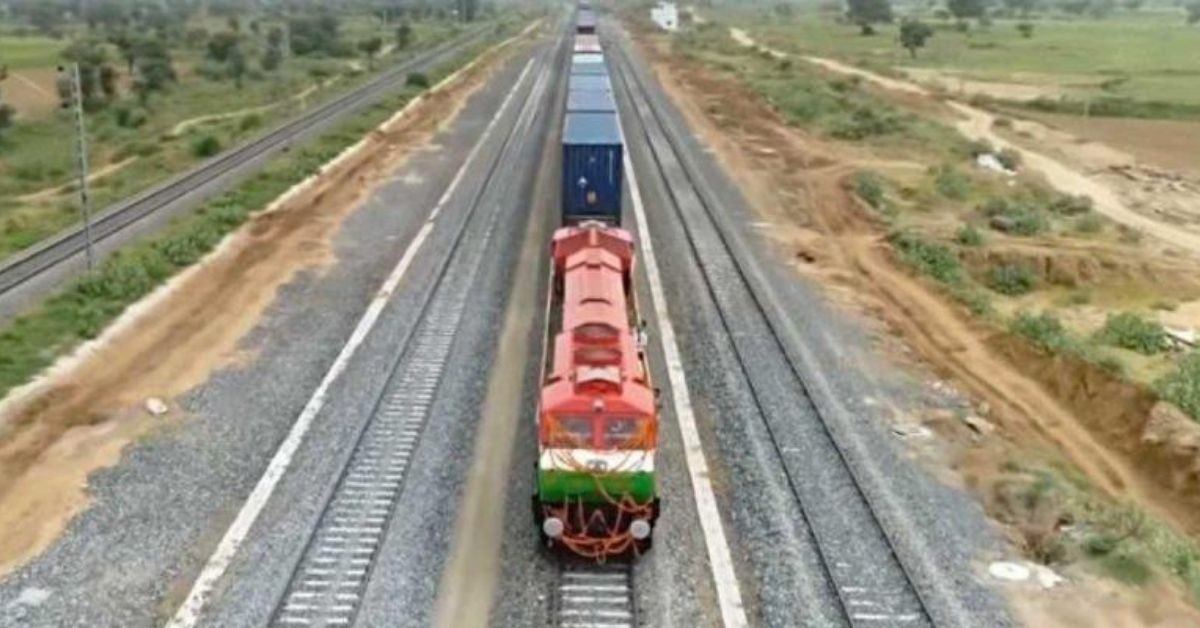While two major DFCs are under construction in the eastern and western parts of the country, South India still lacks its dedicated freight corridor.
South India boasts a robust manufacturing and agricultural sector, including significant industries in information technology, automotive, textiles, and more.
These sectors rely on efficient transportation networks for the timely and cost-effective movement of raw materials and finished goods.
Currently, most of South India’s freight is transported using the existing rail network, which is shared with passenger trains, leading to capacity constraints and slower transit times.
Potential DFCs
1. Chennai-Ennore-Krishnapatnam to Bengaluru DFC:
This can offer a strategic link between the eastern and western coasts and the heart of India’s technology and manufacturing hub.
This region hosts several ports along the east coast that serve not only as international gateways but more importantly as critical links in the supply chain. Ports are a source of value creation for firms that provide services – ranging from logistics to packaging – to production clusters and distribution centres and play a significant role in economic development.
It will play a critical role in driving India’s new “Act East Policy.” This DFC has potential to facilitate the movement of a wide range of commodities and products.
Traffic Potential: Machinery and Electrical Machinery, Automobiles, Textiles and Apparel, Food Processing, Chemical & Petrochemicals and Pharmaceuticals.
The corridor has the potential to play a vital role in driving over 50 per cent of the exports from the region, with automobiles and the computer, electronic, and optical products (CEO) sector leading the way.
2. Vizag-Vijayawada-Chennai-Coimbatore DFC:
The DFC that links Vizag, Chennai, Vijayawada, and Coimbatore addresses the critical need for efficient freight transport in the southern regions.
Vizag, one of India’s largest ports, serves as the entry point for the corridor. Its strategic location on the eastern coast makes it a pivotal hub for international trade and cargo handling.
Vijayawada, located on the banks of the Krishna River, is a major transportation and trade hub. Its geographical position enhances connectivity with both coastal and inland regions.
Chennai, a bustling metropolitan city and major port, acts as a central hub on the corridor. Its industrial prowess and connectivity make it a vital link in the transportation chain.
Coimbatore, known as the Manchester of South India, marks the culmination of the corridor. Its diverse industrial base, including textiles and engineering, makes it a key destination for freight transportation.
Traffic Potential: Machinery and Electrical Machinery, textiles, Pharmaceuticals and Food Products.
This development will not only create jobs but also stimulate economic growth in areas that have traditionally lagged behind in industrialisation.
3. Tuticorin – Kochi – Mangaluru DFC (can be extended to Goa)
Tuticorin, a major port city in Tamil Nadu, serves as the gateway to international trade. The corridor will help facilitate Tuticorin Port, facilitating efficient handling of imports and exports.
Kochi, a significant port city in Kerala, serves as the entry point to the state. The corridor enhances the connectivity between Kerala and other southern states, fostering economic exchange.
Mangaluru, a major port city in Karnataka, marks the culmination of the corridor. Situated on the Arabian Sea coast, Mangaluru facilitates maritime trade and connectivity to global markets.
By freeing up existing rail tracks, the DFC will enhance the speed and reliability of passenger trains on high-demand routes, ultimately improving the overall quality of rail services in the region.
Traffic potential: Petrochemicals and processing, Special Economic Zones (SEZs), including the ONGC – Mangalore SEZ, Fertilizer manufacturing (Mangalore Chemicals & Fertilizers), Oil refineries,
Logistics and shipping, Pharmaceuticals, Food processing, Chemical industries, Textiles and
Fishing and seafood processing (Cochin Fishing Harbour). These Dedicated Freight Corridor projects will not only unlock economic potential but also play a critical role in decongesting the already saturated road network. By promoting the shift of freight transport to the more efficient rail transport system, these corridors will significantly reduce congestion on highways.








